1964 Peel Trident

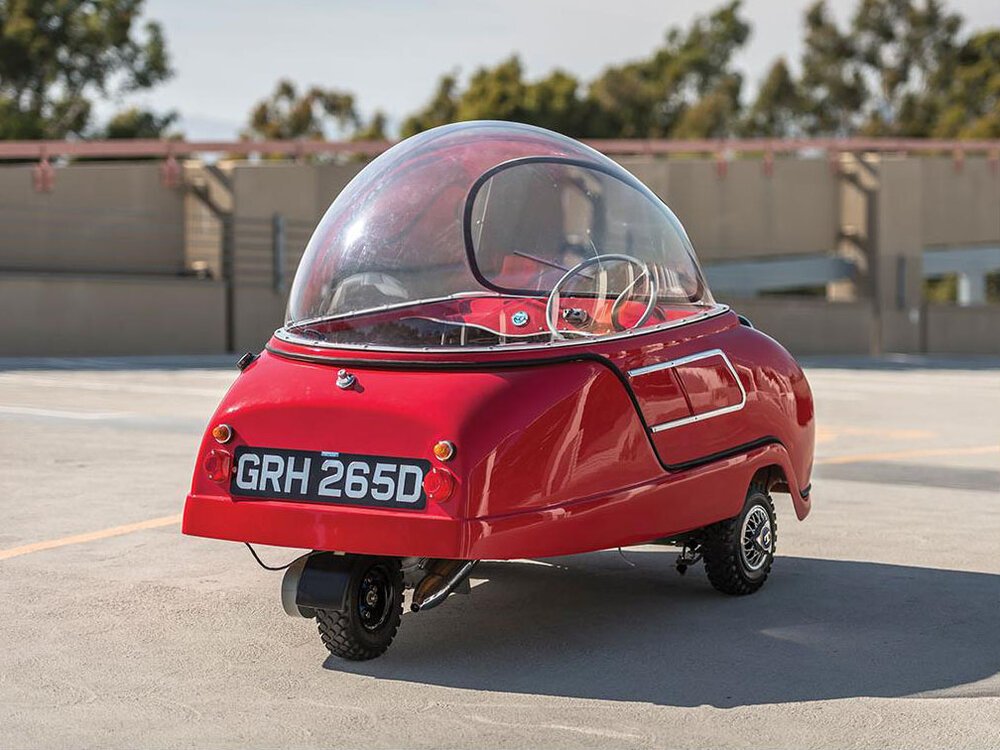
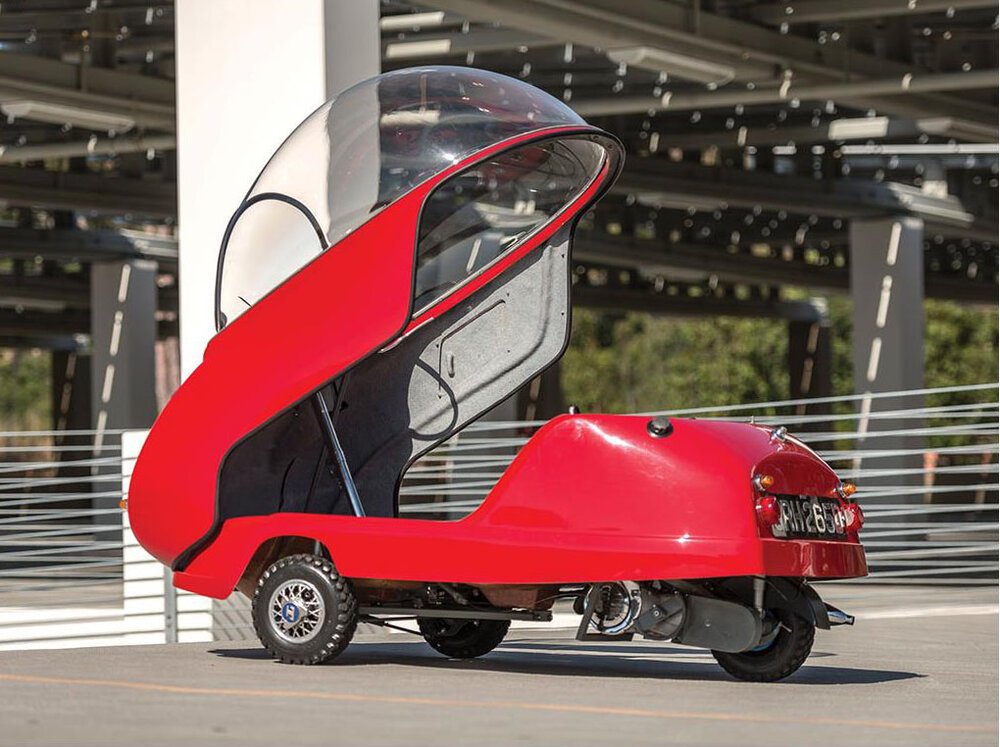
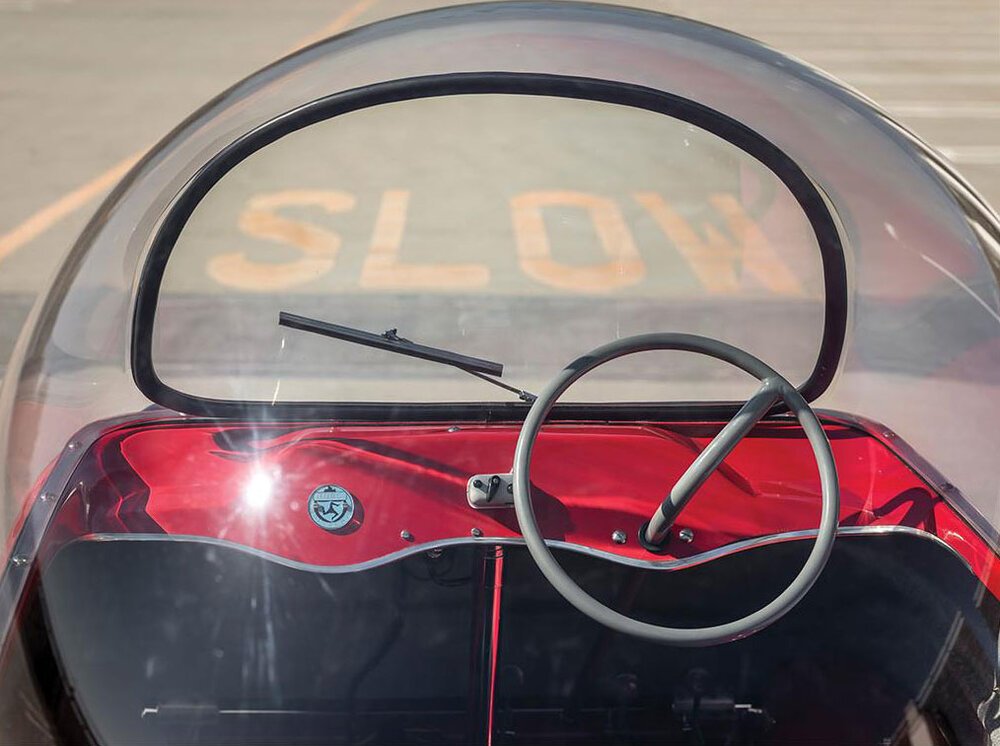
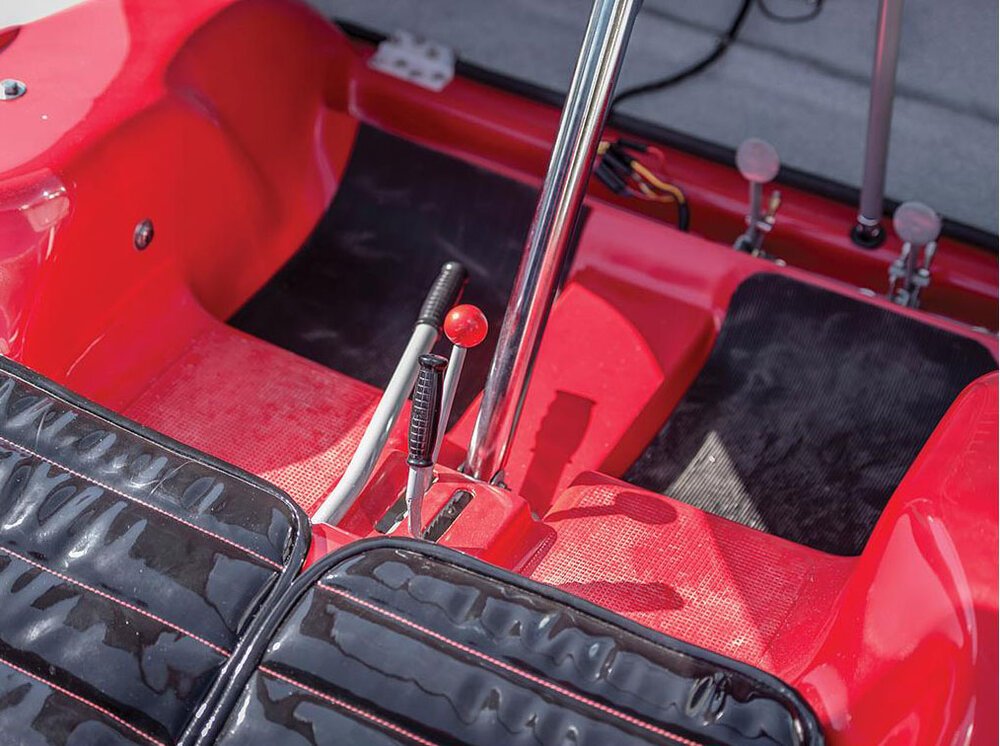
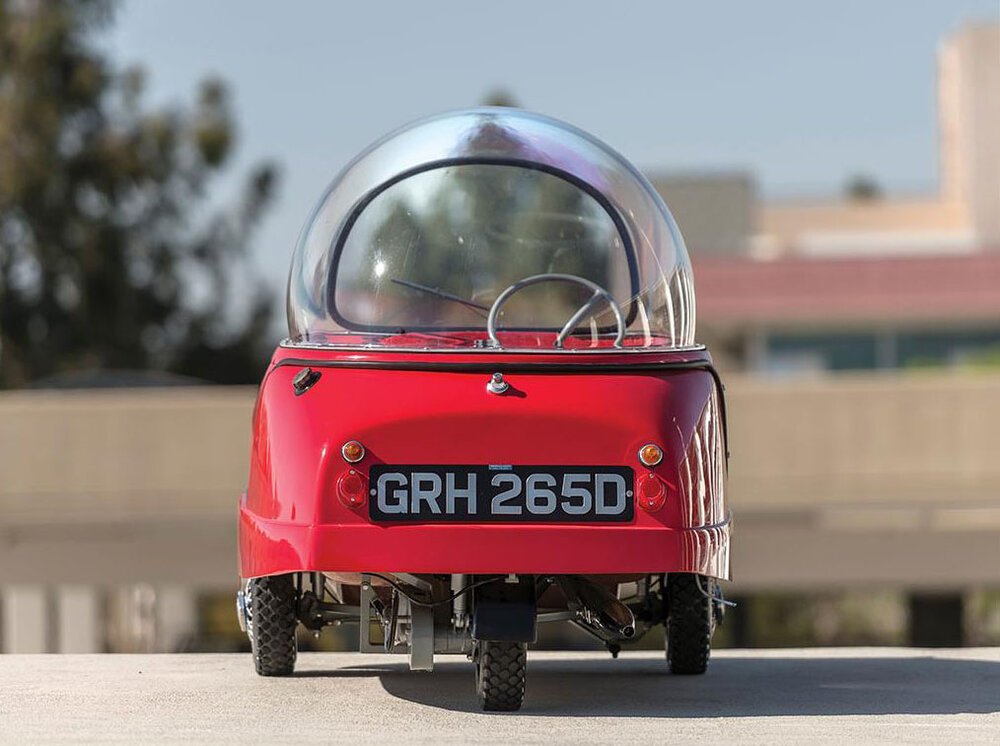
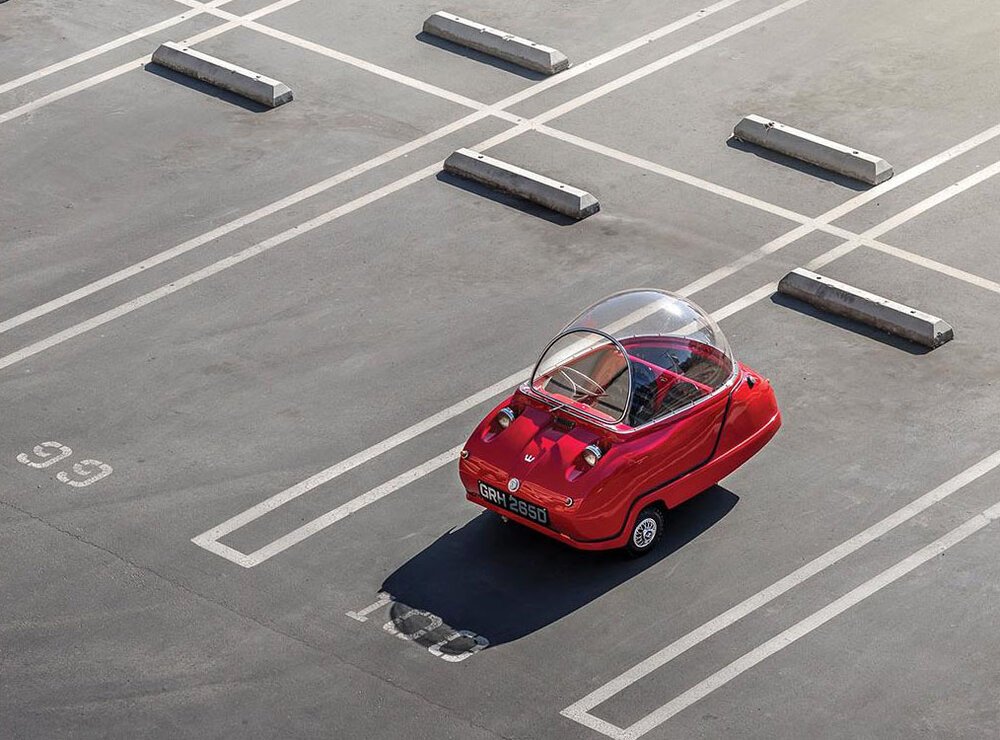
Creative Design by a Boat and Marine Equipment Manufacturer.
Fiberglass Body with a Plexiglass “Space Age” Dome Cockpit.
Economical Transportation with 83 mpg with a top speed of 38 mph.
What we refer to today as micro cars are a post-WW2 construct in an effort primarily focused on the efficient use of available resources in Europe and giving people affordable transportation to get back to work. This gave birth to many odd and creatively designed vehicles, many of which were featured in the 2021 Small Wonders: Mini, Micro, Pedal & Toy Cars exhibit. Few were as unique as the Peel Trident shown here. A fiberglass-bodied 49cc two-passenger vehicle built on England’s Isle of Man. The car’s first appearance in the gallery was in 2018 as a part of Audrain’s Sweet Rides | Summer Fun exhibit as an example of its whimsical nature.
Peel Engineering was an early adapter of fiberglass in the production of boats and marine accessories and expanded its range of products to include lightweight, economical vehicles in its portfolio. Their first “car” was the single-seat P50 which utilized a two-stroke, single-cylinder 50cc Zweirad Union (DKW) motorbike drivetrain to power the diminutive machine. The P50 was to become the world’s smallest street-legal car.
Several years later, Peel introduced the two-seat Trident, a three-wheeled microcar keeping the same powerplant and drive as the P50, but radically changing the body style to what was to be known as “The Terrestrial Flying Saucer”. With cozy seating and a large plastic dome surrounding the occupants that lacked windows that opened, the car had the looks of a spacecraft but lacked practical amenities. To enter the car, the entire front of the vehicle including the dome-shaped roof, hinged forward exposing seating for the occupants.
The fiberglass shell body was colored in either a blue or red gel coat, saving the cost of painting the body parts. Advertisements for the Trident boosted fuel economy reaching 83 miles per gallon and a 28-mph top speed, claiming that the Trident was “almost cheaper than walking”. Even with a 3-speed transmission like its predecessor, the car lacked reverse gear and required the car to be pushed or pulled by hand into parking spaces. The engine drove only the single rear wheel which was only 5” in diameter, as were the front wheels, and stability at speed on rough roads was a challenge.
With only two years of production of the Trident in ’64 and ’65, only a few original examples still exist; however, Peel Engineering re-emerged a decade ago to continue building both the P50 and Trident models in either gasoline or electric engine configurations on a special-order basis.
Specifications:
Engine: 1-cylinder 49cc two-stroke DKW Zweirad Union motorcycle engine; rear-wheel drive
Horsepower: 4.5 hp
Transmission: 3-speed manual
Top speed: 28 mph
Weight: 330 lbs

